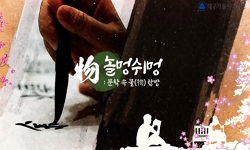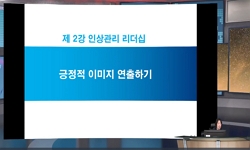본 논문은 그동안 주요 문학 장르의 주변에 위치하며 소외 장르로 간주되어 온 포이통 Feuilleton의 장르미학적 특수성을 밝혀내어 포이통을 독일 문학, 예술사에 있어 아방가르드의 주체로서 ...
http://chineseinput.net/에서 pinyin(병음)방식으로 중국어를 변환할 수 있습니다.
변환된 중국어를 복사하여 사용하시면 됩니다.
- 中文 을 입력하시려면 zhongwen을 입력하시고 space를누르시면됩니다.
- 北京 을 입력하시려면 beijing을 입력하시고 space를 누르시면 됩니다.
https://www.riss.kr/link?id=A82404680
- 저자
- 발행기관
- 학술지명
- 권호사항
-
발행연도
2010
-
작성언어
-
-
주제어
문학 ; 저널리즘 ; 포이통 ; 뉴저널리즘 ; 사실과 허구 ; literature ; journalism ; feuilleton ; new journalism ; fact & fiction
-
KDC
800
-
등재정보
KCI등재
-
자료형태
학술저널
-
수록면
345-366(22쪽)
-
KCI 피인용횟수
2
- 제공처
- 소장기관
-
0
상세조회 -
0
다운로드
부가정보
국문 초록 (Abstract)
본 논문은 그동안 주요 문학 장르의 주변에 위치하며 소외 장르로 간주되어 온 포이통 Feuilleton의 장르미학적 특수성을 밝혀내어 포이통을 독일 문학, 예술사에 있어 아방가르드의 주체로서 자리매김하는 데 주력하였다. 포이통은 문학과 저널리즘이 결합한 혼종 장르로서 ‘작은 형식’의 신문 기사를 지칭하는 동시에 신문의 문예란, 또는 문화란 지면을 가리키기도 한다. 이렇게 문학과 저널리즘의 경계에 위치하는 포이통의 미학적 예술성은 매체 형식적 제약으로 인해 확고하게 인정받지 못하고 문학적 정통성과 관련해서는 논란의 대상이 되어 왔다. 이 연구의 출발은 최근 국내 주요 정간 신문 및 인터넷 신문 기사들이 사실을 전달하는 보도의 형태를 띠기보다는 보도 내용을 스토리화하여 게재하고 있다는 사실의 인식에서부터 시작되었다. 곧 이어 저널리즘의 이러한 경향을 저널리즘의 문학화 현상으로 파악하였고, 이는 갑자기 일어난 최근의 동향이 아니며 이미 1920년대 독일 신문매체를 중심으로 저널리즘 기사, 즉 포이통 기사의 문학화 현상이 있었던 점을 간파하였다. 한편 기존의 보도 중심적 신문매체의 매너리즘에서 벗어나기 위해 시도되었던 1960년대와 1970년대 미국의 뉴저널리즘 운동에서도 저널리즘 텍스트의 문학화 시도가 이루어졌다는 사실에 주목하고 저널리즘사의 이 양대 신경향을 결부시켜 고찰하게 되었다. 저널리즘의 문학화 현상에서 문학화란 무엇인지에 초점을 맞추고 문학화의 실체 파악과 규명에 집중하기에 이르렀다. 문학화의 실체 규명을 위한 문학적 방법론으로 팩트와 픽션, 즉 사실과 허구의 배치 구성의 관점에 따른 분석 기법이 지원되었다. 그 결과 문학화는 팩트의 내러티브화, 즉 스토리텔링을 의미하며, 픽션 창조의 바탕이 되는 작가의 주관성이 객관적 매체인 저널리즘의 문학화를 주도한다는 사실이 밝혀졌다. 그러나 문학과 저널리즘의 관계사에서 저널리즘의 문학화만 있었던 것은 아니며, 문학의 저널리즘화는 19세기 전반부에 하인리히 하이네에 의해 이루어졌다. 그러므로 저널리즘의 문학화와 문학의 저널리즘화의 변증법적 관계의 역사가 독일 문학사의 큰 줄기를 형성하고 있다고 하겠다. 이를 입증하기 위해 본 논문은 18세기부터 20세기를 거쳐 매체 환경이 크게 변화된 현재에 이르기까지 시대정치적, 문화사적 맥락 속에서 포이통에 의한 문학과 저널리즘의 이분법적 발전 양상을 밝혀내었다. 미국의 뉴저널리즘과 1920년대 독일 저널리즘에 있어서 주관적 예술화법상의 차이는 크다고 할 수 있는 바, 전자의 경우 객관적 사실의 주관적 기획이 주관성의 강도를 결정짓는 반면, 후자의 경우 허구의 환상적 전개로 의한 주관화가 저널리즘의 ‘신성한 객관성’을 분리시키고 있다는 사실이 이 논문을 통해 밝혀지게 되었다. 뉴저널리즘과 1920년대 독일 포이통 텍스트가 함께 공유하는 주관적 스토리텔링 기법으로는 포앙테, 패러독스, 위트, 아이러니, 주관적 성찰, 주관적 기제와 허구, 사건의 심리적 스케치, 장면의 스토리적 극적 세팅, 인상주의적 스케치, 연상적-내러티브적 연결, 환상적 기법 등이 있다. 이러한 서사 미학적 특성들과 시대정신이 투영된 주제 리스트는 장르 포이통의 미학적 예술 형식의 기준을 구성한다.
다국어 초록 (Multilingual Abstract)
This paper purports to position Feuilleton as the subject of avant-garde in the history of German literature and arts by clarifying the genre-aesthetic characteristics of Feuilleton that has been regarded as the estranged genre because it is located a...
This paper purports to position Feuilleton as the subject of avant-garde in the history of German literature and arts by clarifying the genre-aesthetic characteristics of Feuilleton that has been regarded as the estranged genre because it is located around major literature genres. Feuilleton is a mixed genre of literature and journalism and it indicates a newspaper article of 'small type' and also indicates the column of literary art or cultures of newspapers. This study started from the recognition of the fact that major local regular and Internet newspapers make facts into stories rather than convey and report the facts. This phenomenon that journalism becomes literature is not the recent tendency that occurred suddenly. In 1920s, German newspapers tended to make Feuilleton articles into literature. On the other hand, new journalism movement, which happened in 1960s and 1970s in the USA to escape from the mannerism of the existing report-centered newspaper medium, attempted to make journalism texts into literature. Paying attention to those phenomena, this paper was conducted in association with the two great new tendencies in the history of journalism. As the literary methodology to clarify the phenomenon that journalism becomes literature, the analytic technique based on the arrangement of facts and fiction was supported. As a result, journalism's becoming literature means that facts become narrative, that is, storytelling, and it was found that a writer's subjectiveness that becomes the foundation for the creation of a fiction takes the initiative in making journalism, an objective medium, become literature. However, in the history of the relation between literature and journalism, there was not only the phenomenon that journalism becomes literature. Literature's becoming journalism was made by Heinrich Heine in the first part of the 19th century. Therefore, this paper examined journalism articles of prominent newspapers from the 18th century to the present when media environment was changed a lot, going through the 20th century, through which it clarified the dichotomous development of literature and journalism by Feuilleton in the context of political and literature history. Narrative aesthetic characteristics ― pointe, paradox, wit, irony, subjective introspection, subjective matters and fiction, psychological sketch of an accident, story-like dynamic setting of scenes, impressive sketch, associative-narrative connection, and fantastic technique ― and the topic lists in which the spirit of the times is reflected compose the standards for the aesthetic artistic form of genre Feuilleton.
목차 (Table of Contents)
- Ⅰ. 들어가는 말
- Ⅱ. 문학과 저널리즘의 관계사
- Ⅲ. “작은 형식” 포이통의 형식미학적 특성
- Ⅳ. 저널리즘의 문학화
- Ⅴ. 맺는 말
- Ⅰ. 들어가는 말
- Ⅱ. 문학과 저널리즘의 관계사
- Ⅲ. “작은 형식” 포이통의 형식미학적 특성
- Ⅳ. 저널리즘의 문학화
- Ⅴ. 맺는 말
참고문헌 (Reference)
1 트루먼 카포티, "인 콜드 블러드 In Cold Blood" 시공사 2006
2 Lewis, Natalie, "Truman Capote's In Cold Blood-New Journalism as an Instrument of Social Criticism" Grin Verlag 2004
3 Bleicher, Joan Kristin, "Sex, Drugs & Bücher schreiben. Grenzgänger. Formen des New Journalism" VS Verlag für Sozialwissenschaften 126-159, 2004
4 Sösemann, Bernd, "Politik im Feuilleton-Feuilleton in der Politik. Die lange Geschichte der kleinen Form" Weidler Buchverlag 40-59, 2000
5 Reus, Gunter, "Ironie als Widerstand. Heinrich Heines frühe Feuilletons Briefe aus Berlin und ihre Bedeutung für den modernen Journalismus. Literatur und Journalismus" Westdeutscher Verlag 159-172, 2003
6 Schütz, Erhard, "Ich zeichne das Gesicht der Zeit. Skizzen zu Feuilleton und Feuilletonforschung aus der und zu der Zeit von 1918 bis 1945. Die lange Geschichte der Kleinen Form" Weidler Buchverlag 177-188, 2000
7 Preisendanz, Wolfgang, "Heinrich Heine. Werkstrukturen und Epochenbezüge" Wilhelm Fink 1983
8 Brummack, Jürgen, "Heinrich Heine. Epoche-Werk-Wirkung" C.H.Becksche 1980
9 Haas, Hannes, "Fiktion. Fakt & Fake?. Grenzgänger. Formen des New Journalism" VS Verlag für Sozialwissenschaften 43-73, 2004
10 Streim, Gregor, "Feuilleton an der Jahrhundertwende. Die lange Geschichte der kleinen Form" Weidler Buchverlag 122-141, 2000
1 트루먼 카포티, "인 콜드 블러드 In Cold Blood" 시공사 2006
2 Lewis, Natalie, "Truman Capote's In Cold Blood-New Journalism as an Instrument of Social Criticism" Grin Verlag 2004
3 Bleicher, Joan Kristin, "Sex, Drugs & Bücher schreiben. Grenzgänger. Formen des New Journalism" VS Verlag für Sozialwissenschaften 126-159, 2004
4 Sösemann, Bernd, "Politik im Feuilleton-Feuilleton in der Politik. Die lange Geschichte der kleinen Form" Weidler Buchverlag 40-59, 2000
5 Reus, Gunter, "Ironie als Widerstand. Heinrich Heines frühe Feuilletons Briefe aus Berlin und ihre Bedeutung für den modernen Journalismus. Literatur und Journalismus" Westdeutscher Verlag 159-172, 2003
6 Schütz, Erhard, "Ich zeichne das Gesicht der Zeit. Skizzen zu Feuilleton und Feuilletonforschung aus der und zu der Zeit von 1918 bis 1945. Die lange Geschichte der Kleinen Form" Weidler Buchverlag 177-188, 2000
7 Preisendanz, Wolfgang, "Heinrich Heine. Werkstrukturen und Epochenbezüge" Wilhelm Fink 1983
8 Brummack, Jürgen, "Heinrich Heine. Epoche-Werk-Wirkung" C.H.Becksche 1980
9 Haas, Hannes, "Fiktion. Fakt & Fake?. Grenzgänger. Formen des New Journalism" VS Verlag für Sozialwissenschaften 43-73, 2004
10 Streim, Gregor, "Feuilleton an der Jahrhundertwende. Die lange Geschichte der kleinen Form" Weidler Buchverlag 122-141, 2000
11 Roß, Dieter, "Fakten und/oder Fiktionen. Grenzgänger. Formen des New Journalism" VS Verlag für Sozialwissenschaften 74-99, 2004
12 Bus, Heiner, "Der U.S.-amerikanische New Journalism der 60er und 70er Jahre. Literatur und Journalismus" Westdeutscher Verlag 273-292, 2003
13 Fähnders, Walter, "Avangatgarde und Moderne 1890-1933" Verlag J.B. Metzler 1933
14 Böning, Holger, "Aufklärung und Presse im 18. Jahrhundert. Öffentlichkeit im 18" Wallstein Verlag 151-163, 1997
동일학술지(권/호) 다른 논문
-
- 한국외국어대학교 외국문학연구소
- 한성철(Han, Sung-chul)
- 2010
- KCI등재
-
보딴의 소설 『태국에서 온 편지』에 나타난 다문화 공존의 기술(技術)
- 한국외국어대학교 외국문학연구소
- 최난옥(Choi, Nan-oak)
- 2010
- KCI등재
-
- 한국외국어대학교 외국문학연구소
- 심종숙(Sim, Jong-sook)
- 2010
- KCI등재
-
류전윈 劉震雲 신사실주의 소설에 나타난 아이러니 irony 연구
- 한국외국어대학교 외국문학연구소
- 이영구(Lee, Young-koo)
- 2010
- KCI등재
분석정보
인용정보 인용지수 설명보기
학술지 이력
| 연월일 | 이력구분 | 이력상세 | 등재구분 |
|---|---|---|---|
| 2027 | 평가예정 | 재인증평가 신청대상 (재인증) | |
| 2021-01-01 | 평가 | 등재학술지 유지 (재인증) |  |
| 2018-01-01 | 평가 | 등재학술지 유지 (등재유지) |  |
| 2015-01-01 | 평가 | 등재학술지 유지 (등재유지) |  |
| 2011-01-01 | 평가 | 등재학술지 유지 (등재유지) |  |
| 2009-01-01 | 평가 | 등재학술지 유지 (등재유지) |  |
| 2007-01-01 | 평가 | 등재학술지 유지 (등재유지) |  |
| 2004-01-01 | 평가 | 등재학술지 선정 (등재후보2차) |  |
| 2003-01-01 | 평가 | 등재후보 1차 PASS (등재후보1차) |  |
| 2001-07-01 | 평가 | 등재후보학술지 선정 (신규평가) |  |
학술지 인용정보
| 기준연도 | WOS-KCI 통합IF(2년) | KCIF(2년) | KCIF(3년) |
|---|---|---|---|
| 2016 | 0.37 | 0.37 | 0.3 |
| KCIF(4년) | KCIF(5년) | 중심성지수(3년) | 즉시성지수 |
| 0.31 | 0.3 | 0.703 | 0.1 |




 ScienceON
ScienceON 스콜라
스콜라







